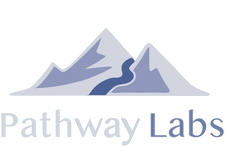Effective communication is the cornerstone of a successful educational environment. However, maintaining clear and efficient communication between teachers and students can often prove challenging, particularly in large educational institutions.
In recent years, the integration of student information software (SIS) has emerged as a game-changer, streamlining communication channels and fostering a more collaborative learning experience. Let’s explore how student information software can revolutionize communication between teachers and students, leading to enhanced engagement, improved academic performance, and stronger relationships within the educational ecosystem and school as a whole.
Streamlining Administrative Tasks
Traditional administrative tasks can consume a significant amount of time and effort, often leaving little room for meaningful communication between teachers and students. Educators can often get bogged down with all of the tasks they need to juggle.
Student information software can automate these various administrative tasks such as attendance tracking, grade management, and scheduling, allowing teachers to focus more on interacting with their students and supporting their academic experience. By reducing administrative burdens, teachers gain valuable time to engage in productive conversations, provide timely feedback, and address individual student needs effectively and in a timely manner.
Real-Time Access to Information
Student information software provides teachers with real-time access to vital student information, such as attendance records, grades, and assignments. This accessibility empowers teachers to have accurate and up-to-date insights into their students' progress, enabling them to identify potential challenges or areas of improvement promptly.
With this information readily available, teachers can initiate proactive conversations with students who may be falling off track, offer personalized guidance, and tailor their teaching methodologies to cater to diverse learning styles in the classroom. Students also benefit from having access to their academic records at their fingertips with a student portal, enabling them to monitor their own progress, set goals, and take ownership of their learning journey and school experience.
Communication Platforms and Messaging Systems
Student information software often includes communication platforms and messaging systems that facilitate direct and efficient communication between teachers and students. These platforms allow teachers to share important announcements, reminders, and resources with the entire class or specific individuals, whether it be through text or email.
This also gives students the ability to ask questions, seek clarification, or request additional support directly from their teachers in a quick manner, fostering a collaborative learning environment beyond the confines of the physical classroom.
Moreover, these communication platforms enable asynchronous communication, which accommodates the diverse schedules and learning preferences of students. Students are used to being able to do things quickly, and an SIS can help students message their teachers with ease. Teachers can also provide feedback on assignments, share additional study materials, or engage in discussions with students outside of regular class hours. This flexibility ensures that students have constant access to guidance and support, enhancing their overall learning experience and improves their academic performance.
Administrator-Teacher Collaboration
Student information software often includes features that facilitate communication between teachers and administrators. Timely updates on students' academic progress, behavior, and attendance can be shared with administrators, enabling them to actively participate in the success of the overall student body. This partnership between teachers and administrators cultivates a supportive environment where both parties can collaborate to support the student growth. This also can help administrators have a better understanding of where students struggle and can provide personalized outreach to improve their overall feelings towards the school.
Through an SIS, teachers can also easily schedule meetings, allowing for in-depth discussions about a student's development. Administrators can also use the software to communicate concerns or questions to teachers, fostering ongoing dialogue between the classroom and the school administrative team. This increased transparency and engagement between teachers and administrators can strengthen the support system around the student, positively impacting their academic journey.
In Conclusion
Student information software serves as a catalyst for improving communication between teachers and students. By streamlining administrative tasks, providing real-time access to information, offering communication platforms, and facilitating administrator-teacher collaboration, this software revolutionizes the educational ecosystem.
Effective communication nurtures engagement, empowers students, and facilitates a dynamic learning environment. As schools and educational institutions continue to embrace technology, integrating student information software should be a priority to enhance communication and promote student success. If you’re looking to implement a new SIS for your school, check out MyPath to learn how it can help improve your teacher-student communication.

